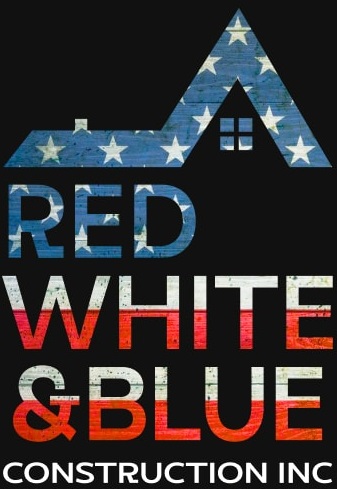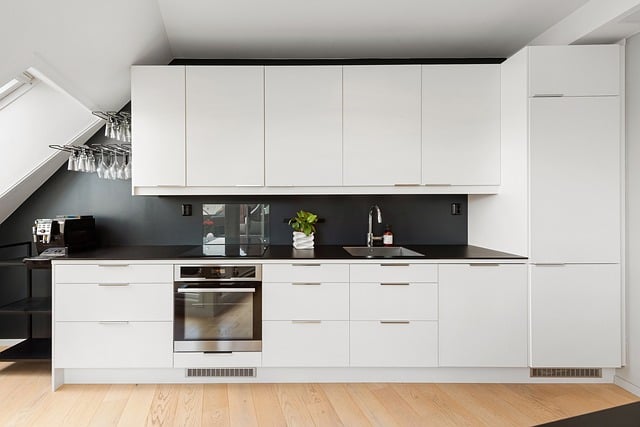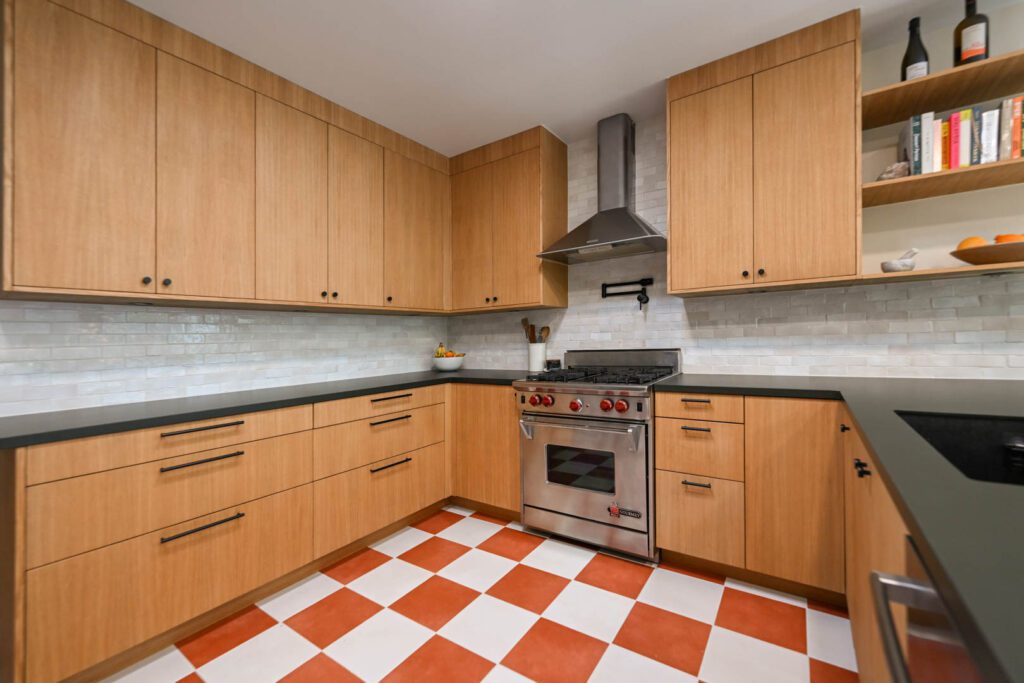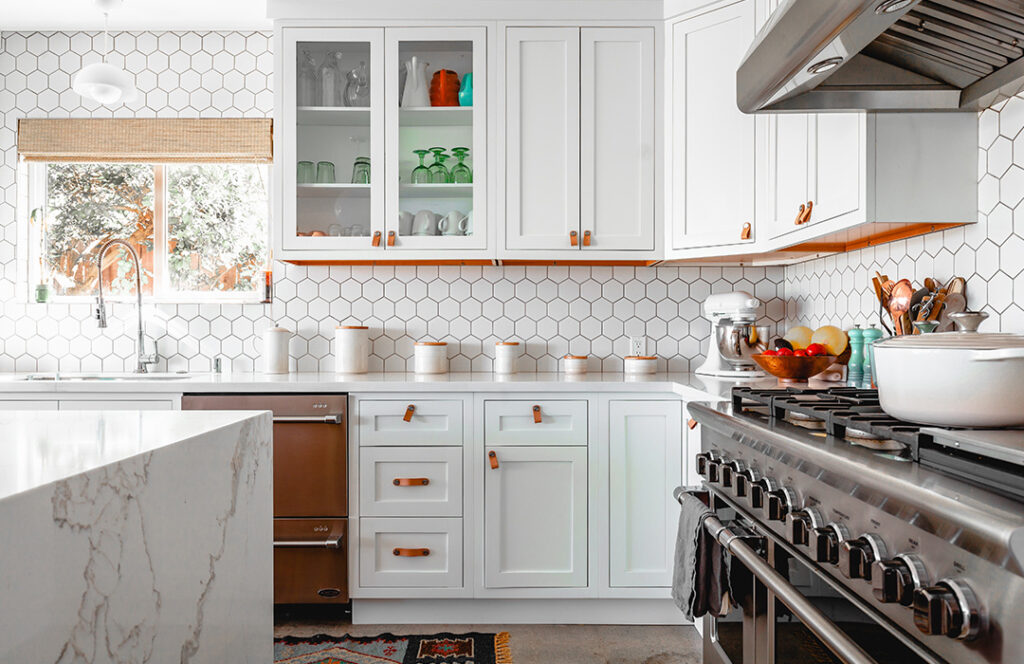Curious about what interior designers advice on selecting kitchen cabinets? Wonder no more! We’ve gathered expert insights to help you navigate the maze of choices and styles. Kitchen cabinetry is not just about storage; it’s a focal point that sets the tone for your culinary space. By understanding what design professionals have to say, you can make informed decisions that blend functionality with aesthetics seamlessly. Let’s delve into the world of kitchen cabinet selection through the eyes of seasoned experts.
Expert Advice on Kitchen Cabinet Selection
Functionality Emphasized
Interior designers stress the significance of functionality when choosing kitchen cabinets. Cabinets should not only look good but also serve their purpose effectively. For instance, having enough storage space and easy accessibility are essential functional aspects to consider.
Experts advise homeowners to think about how they use their kitchens daily before making a choice. This involves considering factors like cooking habits, organization needs, and family size. By prioritizing functionality, you can ensure that your kitchen cabinets meet your practical requirements.
Style and Aesthetic Consideration
Experts recommend thinking about the overall style and aesthetic of your kitchen. Your cabinet choice should complement the existing design elements in the space. For example, if you have a modern kitchen with sleek finishes, opting for minimalist cabinets would enhance the cohesive look.
Interior designers often suggest creating a mood board or gathering inspiration from magazines or online platforms to visualize different styles. This process helps in identifying the right cabinet design that aligns with your desired aesthetic while ensuring harmony within the overall kitchen decor.
Investment in Quality Materials
Investing in high-quality materials is another key piece of advice from interior designers. While it may be tempting to opt for budget-friendly options, experts highlight the long-term benefits of choosing durable materials such as solid wood or plywood.
Key Considerations for Choosing Kitchen Cabinets
Space and Layout
When selecting kitchen cabinets, it’s crucial to consider the available space in your kitchen. The size and layout of the cabinets should align with the dimensions of your kitchen to ensure a seamless fit. For example, if you have a small kitchen, opting for tall cabinets might not be the most practical choice as they can make the space feel cramped.
Prioritize functionality when deciding on the layout of your cabinets. Think about how you use your kitchen daily; this will help determine where specific items should be stored for easy access. For instance, placing pots and pans near the stove can streamline cooking processes.
Storage Needs and Functionality
Assessing your storage needs is essential before choosing kitchen cabinets. Consider what items you need to store – from cookware to pantry goods – and select cabinet styles that accommodate these requirements efficiently. For instance, if you have an extensive collection of spices or dry ingredients, investing in pull-out spice racks or pantry shelves could optimize storage space.
Functionality plays a significant role in ensuring that your chosen cabinets meet your needs effectively. Opt for features like soft-close doors and drawers for quieter operation or adjustable shelves that can adapt to different item sizes over time.
Budget-Friendly Options
While browsing through various cabinet options, always keep your budget at the forefront of decision-making. It’s important to choose cabinets that offer value for money, balancing quality with affordability based on what fits within your financial constraints. Consider materials such as laminate or thermofoil as cost-effective alternatives without compromising aesthetics significantly.
Understanding Different Kitchen Cabinet Materials
Popular Cabinet Materials
Understanding the different materials available is crucial. Some popular options include solid wood, plywood, and MDF. Solid wood cabinets are durable but may be prone to warping in humid environments. On the other hand, plywood is known for its strength and resistance to moisture, making it a reliable choice for kitchen cabinets.
Pros and Cons
Each material has its own set of pros and cons that can influence your decision-making process. Solid wood offers a classic look but requires regular maintenance to prevent damage from moisture. Plywood is sturdy and less susceptible to warping compared to solid wood but tends to be more expensive. Meanwhile, Medium-Density Fiberboard (MDF) is an affordable option that provides a smooth finish when painted; however, it is not as durable as solid wood or plywood.
Considering Factors:
- Durability: Solid wood and plywood are more durable than MDF.
- Maintenance: Solid wood needs regular maintenance; MDF requires careful handling due to its susceptibility to water damage.
- Cost: While solid wood tends to be pricier, MDF offers a budget-friendly alternative.
Seeking Expert Advice: It’s essential to seek expert advice when deciding on the right cabinet material for your kitchen. An interior designer can provide valuable insights based on your specific needs, preferences, and budget constraints. By consulting with a professional,** you can ensure that the chosen material aligns with both aesthetic preferences**and practical requirements.
Choosing the Best Kitchen Cabinet Color
Exploring Color Options
Interior designers emphasize exploring different color schemes. Consider shades like warm gray or classic white that can complement your kitchen’s design. These colors provide a neutral backdrop that allows other elements in your kitchen to stand out.
Selecting a cabinet color that matches the overall aesthetic of your kitchen is crucial. For instance, if you have a modern kitchen with sleek lines and stainless steel appliances, a cool-toned shade like blue or gray might be ideal. On the other hand, for a more traditional look, warmer tones such as beige or cream could work well.
Considering Lighting and Trends
Interior designers often stress considering the lighting in your kitchen when choosing a cabinet color. Natural light can enhance certain hues while artificial lighting may alter how colors appear. It’s essential to test paint samples under different lighting conditions before making a final decision.
Staying informed about current trends versus timeless classics is key when selecting a color for your cabinets. While trendy colors can add flair to your kitchen, they may become outdated quickly. Opting for timeless shades ensures longevity and versatility in case you decide to update other elements of your kitchen.
Tips for Selecting the Right Kitchen Cabinet Finish
Types of Finishes
Understanding different finishes like stained, painted, or laminated is crucial. Each finish offers unique characteristics that impact both aesthetics and functionality. For instance, a stained finish enhances the natural beauty of wood grains, while painted finishes provide a sleek and modern look.
Considering factors such as durability, maintenance requirements, and desired aesthetic preferences is essential when choosing a cabinet finish. A stained finish may require periodic re-staining to maintain its appearance, while painted finishes are easier to clean but may show wear over time. Laminated finishes offer excellent durability and are resistant to moisture and stains.
Importance of Professional Guidance
Seeking expert advice from interior designers or kitchen design professionals can be immensely beneficial in selecting the right cabinet finish. These professionals have extensive knowledge about different finishes’ pros and cons based on your lifestyle needs and design preferences. They can guide you towards a finish that not only complements your overall kitchen design but also aligns with your daily usage habits.
Pros:
- Professional guidance ensures optimal cabinet finish selection.
- Interior designers can provide insights into trends and timeless options.
Con:
- Consulting experts may incur additional costs.
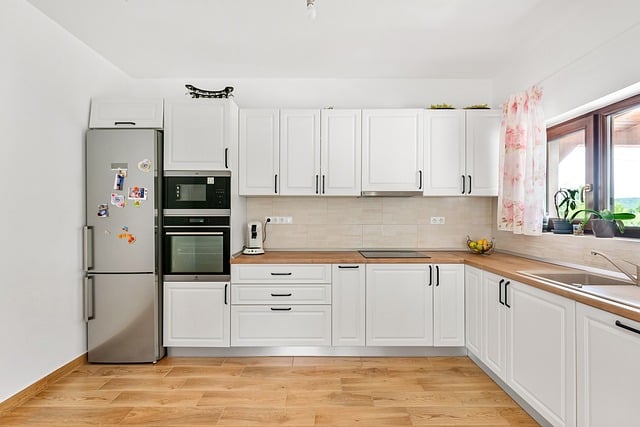
Exploring Various Kitchen Cabinet Styles
Popular Styles
When choosing kitchen cabinets, you can opt for popular styles like shaker, flat-panel, or glass-front. Each style brings a different aesthetic to your kitchen. For instance, shaker cabinets have a classic and timeless look suitable for various design preferences.
Consider the architectural style of your home when selecting cabinet styles. Matching the cabinets to your home’s architecture creates a cohesive and harmonious overall look in your kitchen space. For example, if you have a modern-style home, sleek flat-panel cabinets might complement it well.
Mixing Styles
Don’t be afraid to get creative by mixing different cabinet styles in your kitchen design. Experimenting with combining various cabinet door designs can result in a unique and personalized look that reflects your taste and personality. By blending elements like glass-front upper cabinets with solid lower shaker cabinets, you can add visual interest to the space.
Pros:
- Allows for personalization and creativity in designing.
- Creates an eclectic and visually appealing kitchen space.
Cons:
- Requires careful planning to ensure cohesiveness.
- May not suit traditional or minimalist design preferences.
Trendy and Timeless Kitchen Cabinet Styles
Staying Updated on Trends
To ensure your kitchen stays stylish and modern, it’s crucial to keep an eye on the latest trends in kitchen cabinet design. For instance, two-tone cabinets are gaining popularity for adding visual interest. Open shelving is another contemporary choice that creates a spacious feel. By incorporating these trendy elements into your kitchen, you can achieve a fresh and up-to-date look.
Interior designers often recommend opting for classic choices like white or natural wood finishes. These options have stood the test of time and continue to remain popular across various design aesthetics. Embracing these timeless styles ensures that your kitchen will always exude elegance and sophistication.
Balancing Trendy with Classic
Interior designers emphasize the importance of striking a balance between trendy and classic designs when selecting kitchen cabinets. By combining trendy elements such as unique hardware or bold colors with classic styles like clean lines or traditional door profiles, you can create a harmonious blend of old and new in your kitchen space. This fusion results in a versatile and visually appealing environment that reflects both modernity and timelessness.
Pros:
- Achieve a modern look by incorporating current trends.
- Ensure long-lasting style with timeless choices like white or natural wood finishes.
- Create a balanced aesthetic by blending trendy elements with classic designs.
Cons:
- Overemphasis on trends may lead to frequent updates.
- Choosing only timeless styles might result in a lack of uniqueness.
Sustainable Options for Kitchen Cabinets and Countertops
Eco-Friendly Materials
When selecting kitchen cabinets, consider sustainable options like bamboo, reclaimed wood, or recycled materials. These choices not only add a unique touch to your kitchen but also contribute to reducing environmental impact. For instance, using bamboo for cabinets is an excellent eco-friendly option due to its rapid growth and renewability.
Opting for reclaimed wood can give your kitchen a rustic charm while being environmentally conscious by repurposing old wood. Choosing recycled materials for cabinets supports the idea of sustainability by giving new life to existing resources.
- Bamboo
- Reclaimed wood
- Recycled materials
Low-VOC Finishes and Certifications
To further enhance the sustainability of your kitchen cabinets, consider using low–VOC finishes or water-based alternatives. These finishes emit fewer harmful chemicals into the air compared to traditional solvent-based ones. By opting for low-VOC finishes, you create a healthier indoor environment for your home.
Moreover, look out for certifications such as FSC (Forest Stewardship Council) or LEED (Leadership in Energy and Environmental Design) when selecting cabinets. These certifications ensure that the wood used in your cabinets comes from responsibly managed forests that promote conservation efforts.
- Low-VOC finishes
- FSC certification
- LEED certification
Mastering the Art of Buying Kitchen Cabinets
Research Reputable Manufacturers and Customer Reviews
When selecting kitchen cabinets, it’s crucial to research reputable manufacturers. Look for brands known for quality and durability. Reading customer reviews can provide valuable insights into the aesthetics of the cabinets, their functionality, and overall satisfaction levels.
To ensure a seamless fit in your kitchen space, take precise measurements before purchasing cabinets. This step helps prevent any installation issues or unexpected gaps that may arise during the process. By knowing the exact dimensions needed, you can select cabinets that not only look great but also work perfectly in your kitchen layout.
Consult with Professionals or Interior Designers
Seeking advice from professionals such as interior designers can be invaluable when choosing kitchen cabinets. These experts offer expertise on design trends, color schemes, and practical considerations like storage solutions. A creative director or interior designer can guide you through selecting the perfect cabinet style to match your cooking needs while enhancing the overall aesthetics of your space.
Pros:
- Gain insights on current design trends.
- Ensure optimal utilization of space.
- Avoid costly mistakes during installation.
Cons:
- Professional consultation may add to the total cost.
- Limited options based on individual preferences.
Summary
You’ve now gained valuable insights into selecting the perfect kitchen cabinets. From expert advice to key considerations, understanding materials, colors, finishes, and styles, you’re equipped to make informed decisions. Whether you prefer trendy or timeless designs, sustainable options, or mastering the art of buying cabinets, you’re on your way to transforming your kitchen.
Now it’s time to put your newfound knowledge into action. Take what you’ve learned and start planning your dream kitchen. Remember, the right cabinets can elevate not just the look but also the functionality of your space. So go ahead, dive into the world of kitchen cabinet selection with confidence and create a culinary haven that reflects your style and meets your needs.
Elevate Your Kitchen with Tailored Cabinet Solutions by Red White & Blue Construction!
Are you dreaming of a custom kitchen makeover in Lafayette, CA? Look no further than Red White & Blue Construction, your ultimate choice for exceptional pre-remodeling planning services! Specialized in creating the perfect backdrop for successful kitchen transformations, we customize our pre-remodeling approach to align seamlessly with your distinct vision and requirements. Celebrated for our proficiency in pre-remodeling planning, our commitment is to make your ideal kitchen a tangible reality, focusing meticulously on every detail to surpass your expectations. Our esteemed reputation across the Bay Area is a testament to our dedication to precision, quality, and the superior standards we maintain at every planning phase.
With Red White & Blue Construction, the journey to your kitchen remodel success is not just about laying the foundation; it’s about charting the course to a flawless execution. Thanks to our thorough planning, transparent pricing, and unmatched customer service, choosing us for your custom kitchen remodeling venture ensures a smooth, effective makeover. Opt for Red White & Blue Construction for all your pre-remodeling planning necessities and begin the path to your dream kitchen with confidence. Reach out to us today to initiate your project!
Disclaimer
The materials available on this website are for informational and entertainment purposes only and not to provide advice. You should obtain advice concerning any particular issue or problem from a professional. You should not act or refrain from acting based on any content included in this site without seeking legal or other professional advice. The information presented on this website may not reflect the most current building developments. No action should be taken in reliance on the information on this website. We disclaim all liability concerning actions taken or not taken based on any or all of the contents of this site to the fullest extent permitted by law.
